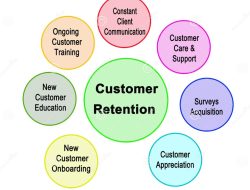How the Choice of Accounting Method Impacts Revenue and Purchasing Strategies is a critical topic for businesses aiming to optimize their financial performance. The choice of accounting method, whether cash or accrual, shapes not only how revenue is recognized but also influences purchasing decisions and inventory management. Understanding these dynamics is essential for companies looking to align their financial strategies with operational goals.
Different accounting methods come with unique definitions and implications, affecting how financial statements are presented. For instance, cash accounting captures revenue when cash is received, while accrual accounting records revenue when it is earned, regardless of when payment occurs. This fundamental difference can lead to varied interpretations of a business’s financial health and ultimately influence investor confidence and purchasing behaviors.
Understanding Accounting Methods
In the world of business, understanding various accounting methods is crucial for making informed decisions. Accounting methods dictate how revenues, expenses, and profits are recorded and reported in financial statements. Each method has unique implications that can influence a company’s financial health and operational strategies.Accounting methods primarily fall into two categories: cash basis and accrual basis. Both methods provide a framework for tracking income and expenses, but they differ significantly in timing and measurement of transactions.
Choosing the right accounting method can profoundly impact financial reporting and overall business strategy.
Types of Accounting Methods
Several accounting methods are utilized by businesses, each defined by how and when transactions are recorded. Their choice can affect financial statements and revenue recognition.
- Cash Basis Accounting: This method records revenue and expenses when cash is actually received or paid. It’s straightforward and often used by small businesses due to its simplicity. For example, a freelance graphic designer might use cash basis accounting to record income only when clients pay for completed projects.
- Accrual Basis Accounting: This method recognizes revenue and expenses when they are incurred, regardless of cash flow. Larger companies often prefer this method because it provides a more accurate picture of financial health. For instance, a software company might record revenue as soon as a service is rendered, even if payment is received later.
- Modified Cash Basis Accounting: This is a hybrid approach that combines elements of both cash and accrual accounting. It records some transactions on a cash basis while others are recorded on an accrual basis. A construction company might employ this method, recognizing large project revenues as they are earned while handling smaller purchases on a cash basis.
The impact of choosing between cash and accrual accounting is significant.
Cash basis accounting offers simplicity and direct cash flow visibility, while accrual basis accounting provides a comprehensive view of long-term financial performance.
Financial statements under cash accounting can be misleading, as they may not reflect the true state of a company’s obligations or revenues. Conversely, accrual accounting enhances the accuracy of financial reporting but can complicate cash flow management. An example includes a retail store that, using accrual accounting, may show substantial sales on its income statement while facing cash shortages due to delayed payments from clients.Understanding these distinctions enables businesses to align their accounting methods with their operational needs and strategic objectives, fostering better revenue management and purchasing decisions.
Revenue Recognition Principles
Understanding revenue recognition principles is essential for businesses as they determine how and when revenue is recorded in financial statements. Different accounting methods, such as accrual and cash basis accounting, employ unique principles for recognizing revenue, which can significantly affect reported revenue figures and overall business performance. This understanding is critical for stakeholders to make informed decisions based on financial health and operational efficiency.Revenue recognition principles are governed by accounting standards that dictate how revenue should be reported.
The two primary methods are cash basis accounting and accrual basis accounting. In cash basis accounting, revenue is recognized only when cash is received, which can create discrepancies in financial reporting. Conversely, under accrual accounting, revenue is recognized when it is earned, regardless of when the cash transaction occurs. This principle leads to a more accurate portrayal of a company’s financial position, as it reflects earned income, even if payment has not yet been received.
Impact of Different Accounting Methods on Revenue Reporting
The choice of accounting method significantly impacts how revenue is recorded and reported. Here are some key factors to consider when evaluating the effects of different methods on business performance and reported revenue figures:
Timing of Revenue Recognition
Accrual accounting allows for the recognition of revenue when it is earned, leading to a more immediate reflection of performance. This can result in higher reported revenue in periods of growth.
Deferred Revenue
Businesses may receive payments before delivering goods or services. With accrual accounting, this payment is recorded as deferred revenue until the goods or services are provided, affecting cash flow and revenue reporting.
Consistency in Reporting
Different methods lead to variations in reported revenue, which could confuse investors and stakeholders. Consistency in applying the chosen accounting method is crucial for accurate financial analysis.
Earnings Management
Companies might manipulate revenue recognition to present a favorable financial picture. For instance, delaying recognition in downturns or accelerating it during favorable periods can impact perceived company performance.
Regulatory Compliance
Adhering to Generally Accepted Accounting Principles (GAAP) or International Financial Reporting Standards (IFRS) is essential for proper revenue reporting. Non-compliance can lead to penalties and reputational damage.
Accrual accounting provides a more comprehensive view of a company’s financial health by recognizing revenue when it is earned, rather than when cash is exchanged.
In conclusion, the principles of revenue recognition and the choice of accounting method have profound implications on a company’s financial reporting and strategic decision-making. Companies must carefully consider their revenue recognition strategy to ensure clarity and accuracy in their financial statements, thus enhancing their performance and fostering investor trust.
Purchasing Strategies in Relation to Accounting Methods
Understanding the influence of accounting methods on purchasing strategies is crucial for businesses aiming to optimize their inventory management and supplier relationships. The choice of accounting methods, such as FIFO (First In, First Out) or LIFO (Last In, First Out), directly affects not only how revenues are recognized but also how purchasing decisions are made. Companies must navigate these complexities to align their procurement approaches with their accounting practices, ensuring both financial accuracy and operational efficiency.The impact of accounting methods on purchasing decisions and inventory management is significant.
For instance, businesses using FIFO tend to purchase and hold inventory that reflects market prices more accurately, as older inventory is accounted for first. Conversely, companies employing LIFO may delay purchasing decisions, anticipating price increases to maximize tax benefits. This can lead to variations in inventory levels that ultimately affect cash flow and operational strategy.
Influence of Accounting Methods on Purchasing Decisions, How the Choice of Accounting Method Impacts Revenue and Purchasing Strategies
The selection of an accounting method has vital implications for how a business evaluates its purchasing strategies. Key aspects include:
- Inventory Valuation: Different accounting methods result in varying inventory valuations that influence purchasing budgets and cash flow management.
- Cost Management: LIFO accounting can lead to lower taxable income during inflation, prompting businesses to stock up on inventory to take advantage of lower tax liabilities.
- Supplier Relationships: Companies must assess supplier contracts through the lens of their accounting methods, as purchasing strategies may shift based on how costs are reported on financial statements.
The role of accounting in evaluating supplier contracts and pricing strategies cannot be understated. Accurate financial reporting relies on aligning purchase contracts with the selected accounting method, impacting both the negotiation process and the overall procurement strategy. For instance, understanding the implications of volume discounts and payment terms is essential for companies utilizing accrual accounting, as these factors can alter the timing of expense recognition and cash flow.
Shifts in Purchasing Behavior Due to Accounting Method Changes
Changing accounting methods can significantly alter a company’s purchasing behavior. When a firm transitions from FIFO to LIFO, for example, it may exhibit increased purchasing activity to capitalize on tax advantages. This shift not only impacts inventory levels but also supplier negotiations, as firms may seek bulk purchases to mitigate higher carrying costs associated with increased inventory.Consider an example where a retail company moves from FIFO to LIFO during a period of rising costs.
The immediate effect is a reduction in reported earnings, prompting the company to reassess its purchasing strategy to maintain profitability. As a result, the company may seek suppliers offering better payment terms or negotiate bulk purchase discounts to offset the higher costs associated with holding inventory.
Implementing a strategic approach to accounting methods can lead to improved financial performance and stronger supplier relationships.
Financial Reporting and Investor Perception

In the realm of business finance, the choice of accounting method plays a pivotal role in shaping financial reporting and influencing investor confidence. The accounting method selected by a company can drastically alter reported revenue figures, affecting the overall perception of the business’s financial health. Understanding this relationship is crucial for investors who seek to make informed decisions based on the financial statements presented to them.Different accounting methods, such as Generally Accepted Accounting Principles (GAAP) and International Financial Reporting Standards (IFRS), bring various implications for financial reporting.
For instance, GAAP allows for the use of Last In, First Out (LIFO) inventory methods, which can affect the expense recognition and ultimately the net income reported. Conversely, IFRS typically requires the First In, First Out (FIFO) method, leading to higher reported profits in an inflationary environment.
Comparative Analysis of Companies with Different Accounting Methods
To illustrate the impact of accounting methods on investor perception, let’s consider two hypothetical companies: TechInnovate Inc. using GAAP with LIFO for inventory, and DigitalSolutions Ltd. using IFRS with FIFO. TechInnovate Inc. reports lower profits during periods of rising costs due to higher cost of goods sold under LIFO, which may lead to a cautious view among investors regarding its profitability.
However, in a non-inflationary environment, this method can provide tax advantages. Meanwhile, DigitalSolutions Ltd. reports higher profits under FIFO, enhancing its attractiveness to investors looking for growth potential. This comparative analysis reveals that the choice of accounting method can directly influence a company’s market reaction and investor confidence.Investors tend to interpret revenue figures through the lens of accounting practices, which can lead to varied interpretations based on the method employed.
For instance, a sudden spike in revenue may be perceived as positive growth, but if achieved through aggressive revenue recognition practices, investors might question the sustainability of such growth. Understanding the implications of accounting methods on financial statements is crucial. Investors are advised to delve deeper into the accounting practices of companies when analyzing revenue figures. The following key points highlight how accounting methods shape investor perception:
- Revenue Timing: Different methods can manipulate when revenue is recognized, affecting perceived financial performance.
- Profitability Measures: The choice of inventory accounting can significantly impact gross and net profit margins reported.
- Cash Flow Implications: Investors should assess how accounting methods influence operational cash flow, as reported earnings may not reflect cash availability.
- Market Reactions: Companies that employ conservative accounting methods might invoke more trust among long-term investors, contrasting with those that exhibit aggressive accounting practices.
“The choice of accounting method can create a lens through which investors view a company’s financial robustness.”
Investors need to familiarize themselves with the intricacies of the accounting methodologies employed by companies to navigate the complexities of financial reporting effectively. By recognizing the effects of these methods on reported figures, investors can enhance their analytical capabilities and make more informed investment decisions.
Tax Implications of Accounting Methods
The choice of accounting method can significantly influence a business’s tax liabilities. Different methods can lead to varying taxable income, thus impacting the overall financial health of the company. Understanding these implications allows businesses to strategically select accounting practices that align with their financial goals while minimizing tax burdens.The impact of accounting methods on tax liabilities is multifaceted, as different approaches can either defer taxes or accelerate them, depending on the recognition of income and expenses.
For instance, the cash basis method recognizes income and expenses when cash is exchanged, often leading to lower taxable income in the short term. In contrast, the accrual basis method recognizes income when earned and expenses when incurred, potentially resulting in higher taxable income in the same period.
Examples of Tax Benefits and Disadvantages
Analyzing different accounting methods reveals distinct tax benefits and disadvantages. Businesses can maximize their tax efficiency by understanding these outcomes:
- Cash Basis Accounting:
This method allows businesses to report lower taxable income when expenses exceed revenues, offering a tax advantage during low-income periods. However, it may lead to higher tax obligations in periods of increased cash flow without corresponding expenses. - Accrual Basis Accounting:
While this method provides a more accurate picture of financial health, it can result in a higher tax burden as income is recognized sooner. For example, if a business provides services in December but receives payment in January, it must still report the income for December. - Section 179 Deduction:
Utilizing this tax provision allows businesses to deduct the full cost of qualifying equipment in the year it is purchased rather than depreciating it over several years. This strategy is advantageous for businesses looking to minimize tax liability in high-income years. - Inventory Valuation Methods (e.g., FIFO vs. LIFO):
The method chosen can affect the cost of goods sold and taxable income. LIFO (Last-In, First-Out) can reduce taxable income during inflationary times by matching higher costs against current revenues. Conversely, FIFO (First-In, First-Out) may result in higher taxes as it reports older, lower costs against revenues.
Strategies to optimize tax outcomes through accounting methods include thorough forecasting to choose the appropriate method based on anticipated income levels. Businesses should also consider consulting with tax professionals to align their accounting practices with overall corporate strategy, ensuring that they take advantage of available tax deductions and credits effectively.
“Choosing the correct accounting method is not just about compliance; it’s a strategic weapon in managing tax liabilities.”
Regulatory Considerations
In today’s complex financial landscape, adherence to regulatory frameworks is paramount for organizations aiming to maintain credibility and transparency. The choice of accounting methods significantly impacts how revenue is reported, which in turn influences investor perception and business strategies. Understanding the regulatory environment is essential for ensuring compliance while effectively managing financial reporting obligations.
The landscape of accounting regulations is shaped by various frameworks that impose rules on how revenue is recognized and reported. These regulations not only dictate accounting practices but also influence strategic decisions within organizations. Compliance with these requirements can affect everything from financial reporting to operational practices, necessitating careful consideration of accounting choices.
Key Regulations Influencing Accounting Methods
Numerous regulatory frameworks govern accounting practices, each with its nuances and implications for revenue recognition. Below is a brief overview of several key regulations that dictate how companies must approach their accounting methods:
| Regulatory Framework | Description | Region |
|---|---|---|
| International Financial Reporting Standards (IFRS) | A set of accounting standards developed by the International Accounting Standards Board (IASB) that dictate how transactions and other financial events should be reported. | International |
| Generally Accepted Accounting Principles (GAAP) | A collection of commonly-followed accounting rules and standards for financial reporting in the United States. | United States |
| Accounting Standards for Private Enterprises (ASPE) | Canadian accounting standards applicable to private enterprises, offering simplified reporting options compared to IFRS. | Canada |
| Financial Accounting Standards Board (FASB) Statements | Specific pronouncements that guide the accounting profession in the U.S., influencing how businesses report financial statements. | United States |
| European Union Accounting Regulations | Directives and regulations that govern the financial reporting practices of companies within EU member states. | European Union |
Compliance with regulatory frameworks is not just a legal obligation; it shapes the very strategies that businesses adopt to achieve financial clarity and credibility.
The impact of these regulatory frameworks extends to various aspects of business strategies. Organizations must align their respective accounting methods to comply with these regulations while maintaining operational efficacy. Such compliance ensures that stakeholders, including investors and regulators, can trust the financial information presented, fostering a stable business environment. As companies navigate these regulatory landscapes, they often face challenges in balancing regulatory requirements with strategic goals, necessitating a proactive approach to compliance and reporting.
Case Studies and Real-World Applications: How The Choice Of Accounting Method Impacts Revenue And Purchasing Strategies
The selection of an accounting method can profoundly influence a company’s financial health and strategic decisions. By examining real-world cases, we can better understand how changes in accounting practices have shaped revenue figures and purchasing strategies across various industries. This analysis highlights the importance of thoughtful accounting method selection and its multifaceted implications on business operations.
Case Studies of Companies Changing Accounting Methods
Numerous companies have experienced significant impacts on their operations by altering their accounting methods. Below are key examples that illustrate these transformations:
Company A
Transition from Cash to Accrual Accounting
Company B
Adoption of IFRS Standards
Company C
Change in Revenue Recognition Method
“The choice of accounting method is not just a technical decision; it’s a strategic one that can define a company’s trajectory.”
Financial Expert
Lessons Learned from Businesses in Adapting Accounting Strategies
Adapting accounting strategies has provided valuable insights for many organizations. Companies that have successfully navigated these changes often highlight the following lessons:
Importance of Flexibility
Businesses that maintain flexibility in their accounting methods can adapt more swiftly to market changes, regulatory updates, or shifts in business model. This adaptability has been critical in industries like technology and retail, where rapid changes are commonplace.
Stakeholder Engagement
Engaging with stakeholders during the transition process is crucial. Companies that communicate effectively with investors, employees, and suppliers can mitigate uncertainties and foster a smoother transition.
Training and Development
Investing in training for employees on new accounting methods ensures that everyone is aligned with the company’s financial strategy. This investment can lead to enhanced accuracy in financial reporting and improved compliance with regulations.
“A well-informed team is essential; training can transform challenges into opportunities.”
Accounting Consultant
These case studies and lessons not only illustrate the varied impacts of accounting method selection but also emphasize the strategic advantage that informed decisions can offer to companies in navigating their financial landscapes effectively.















